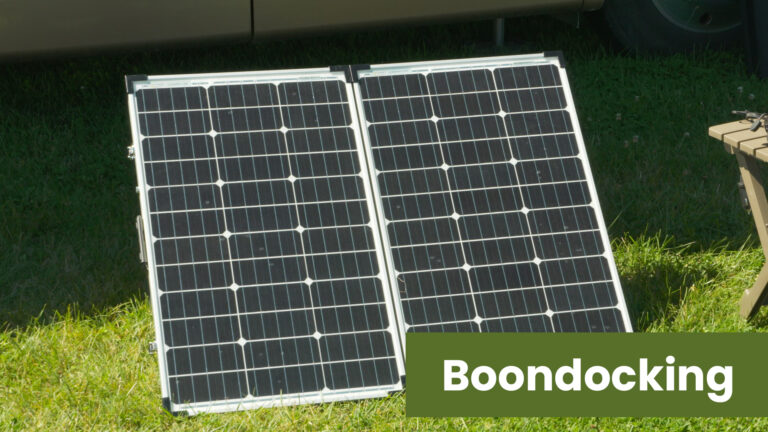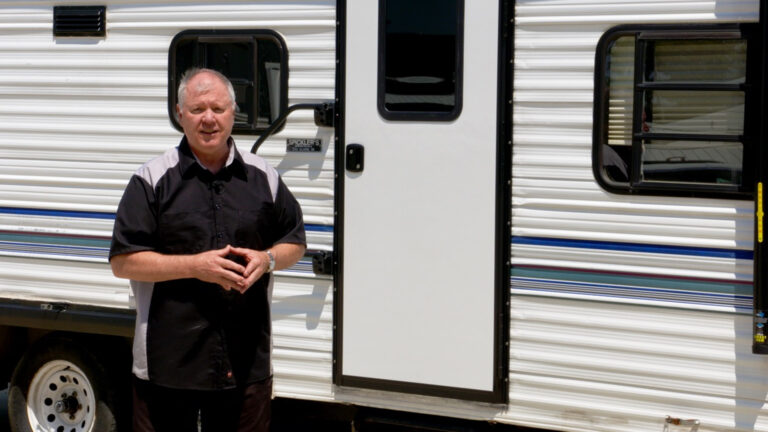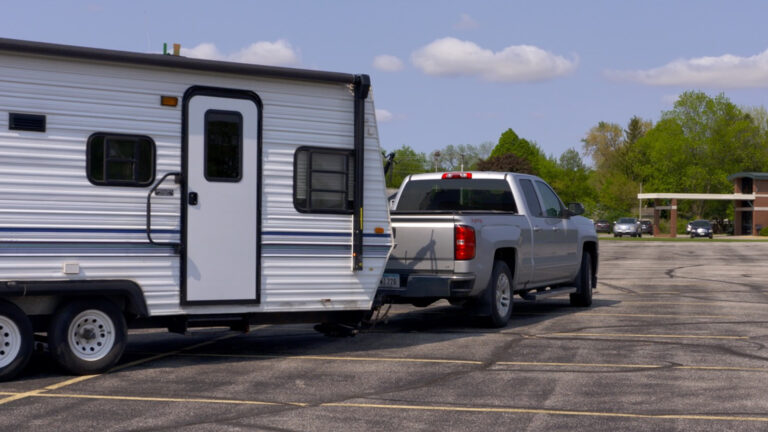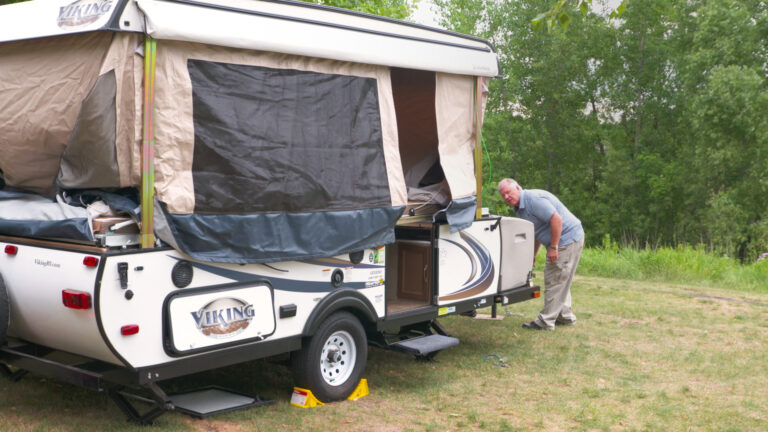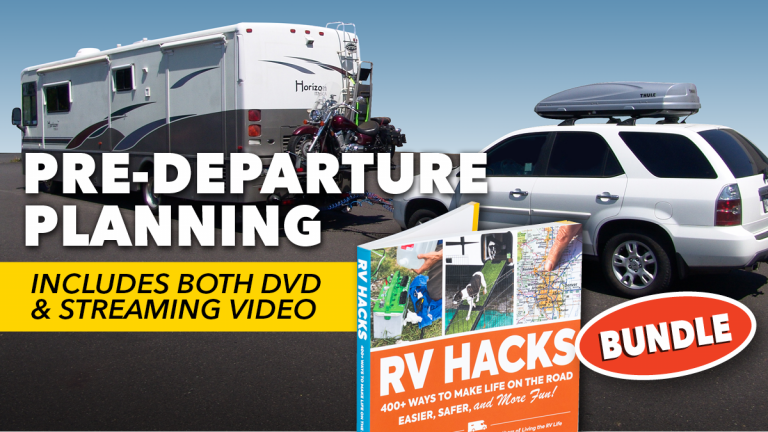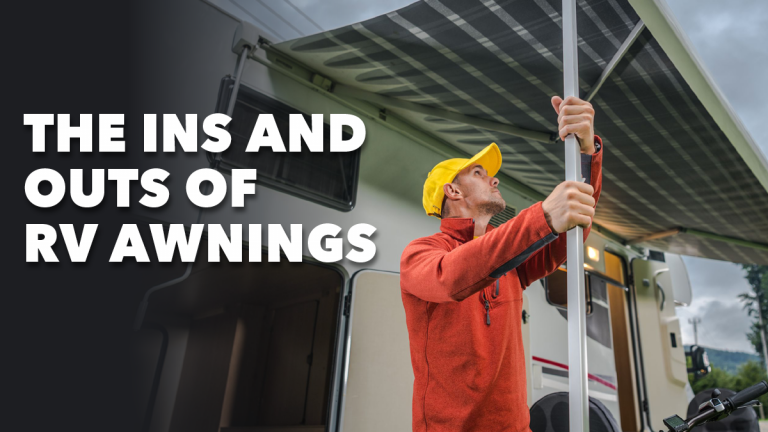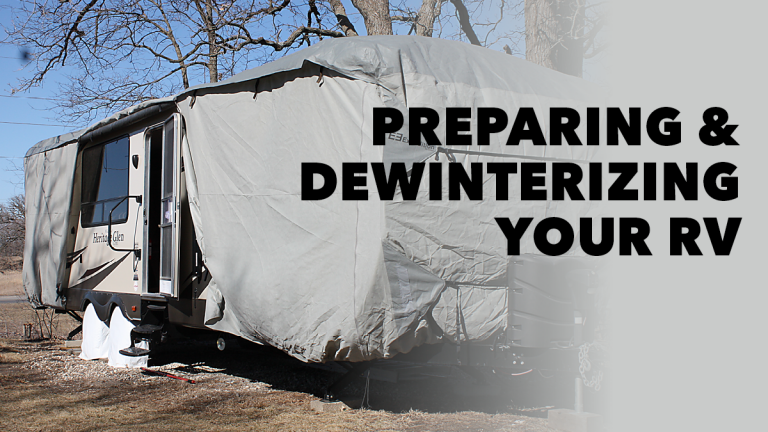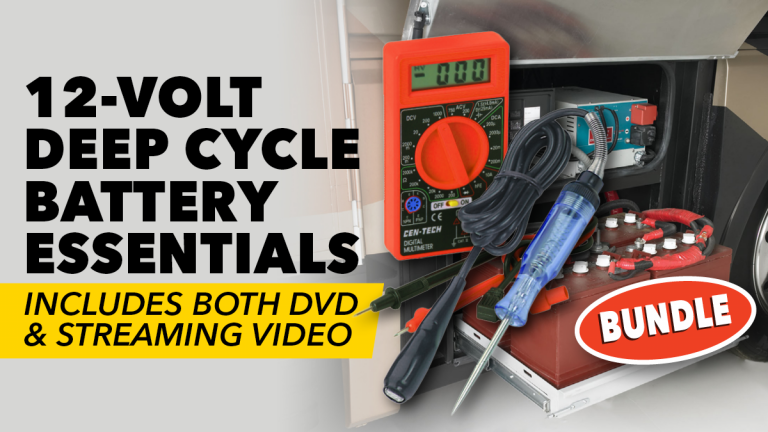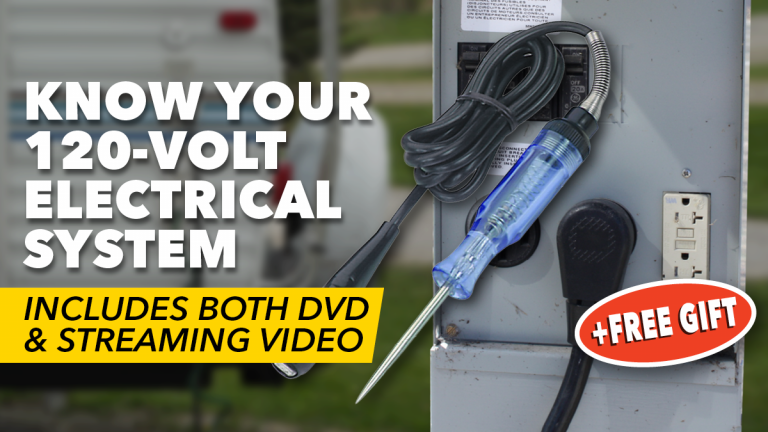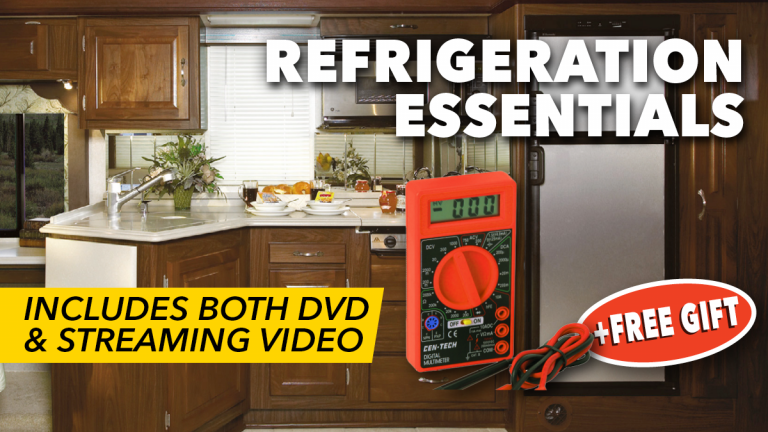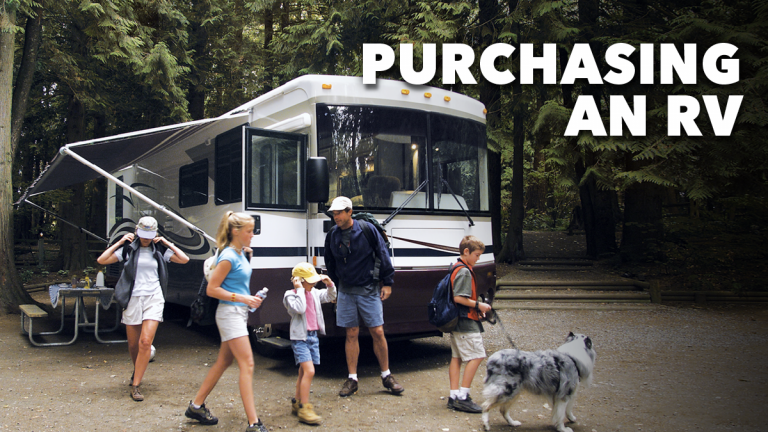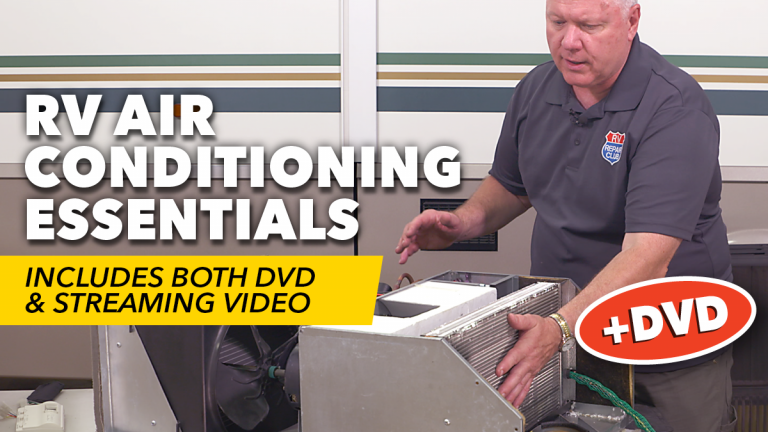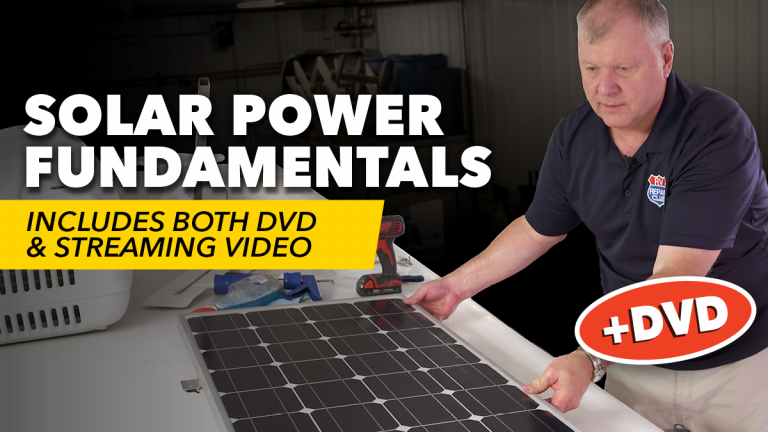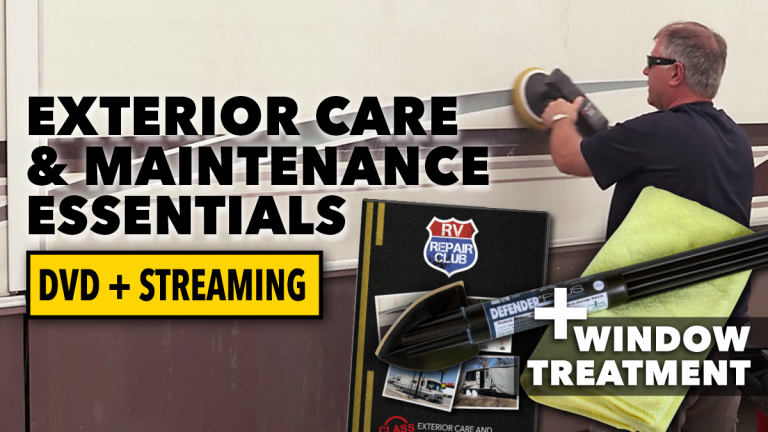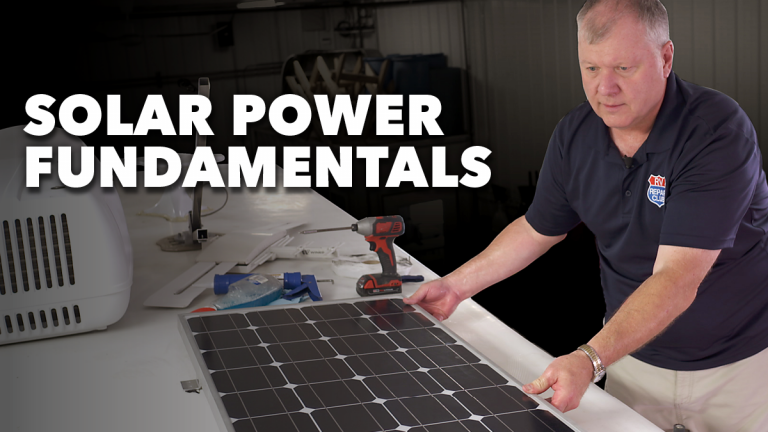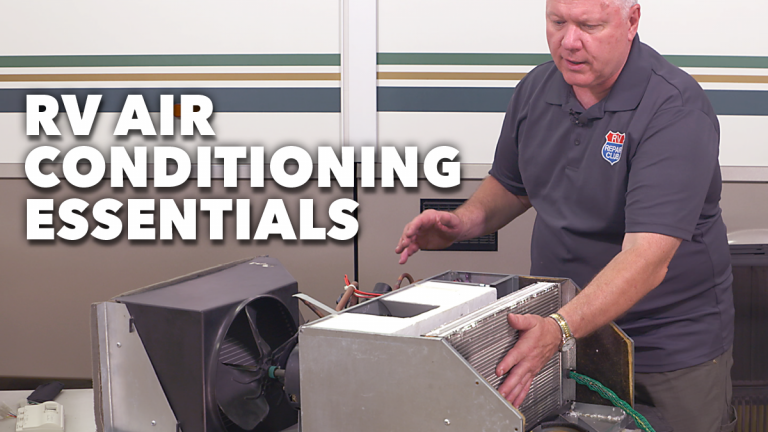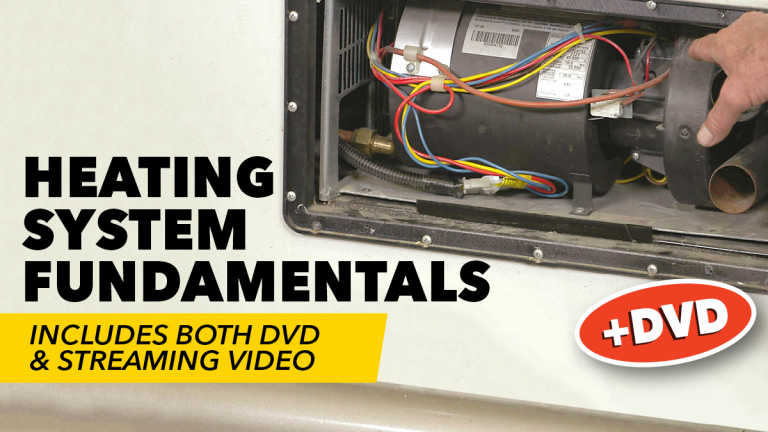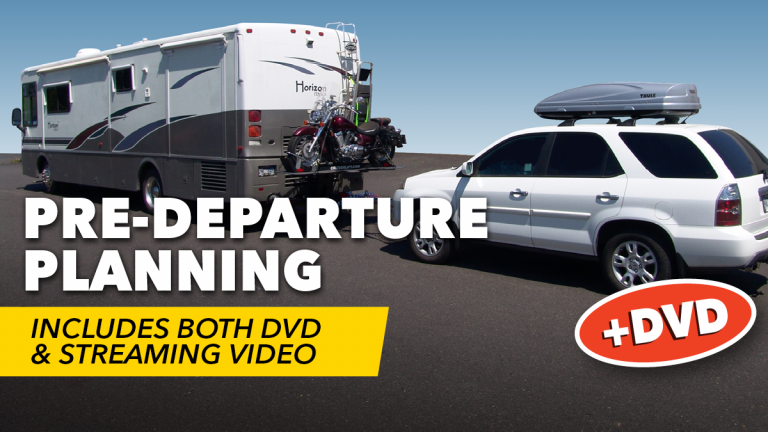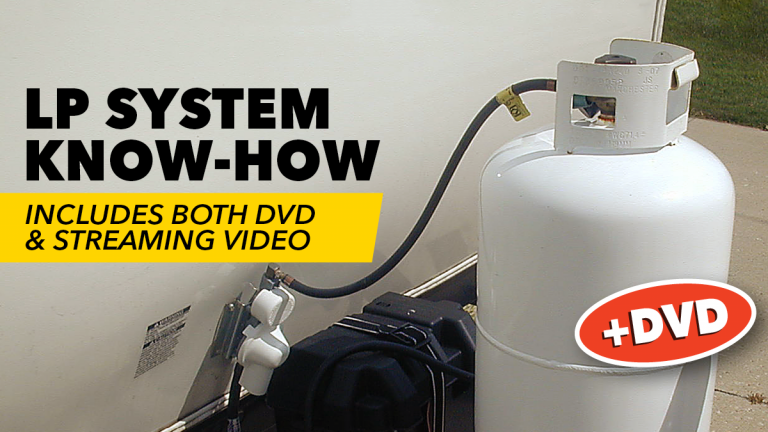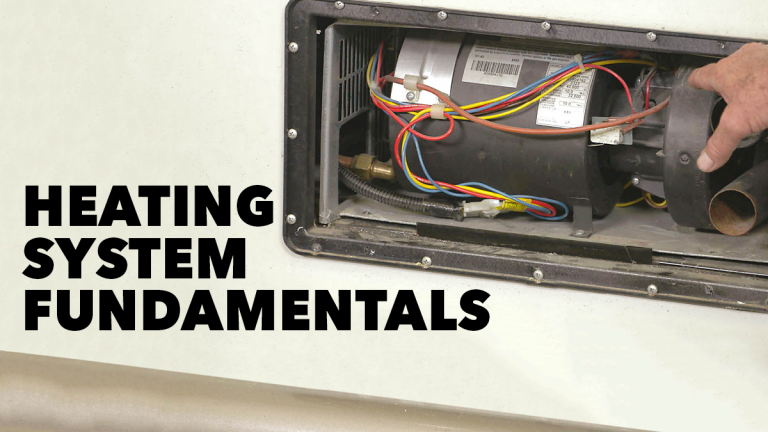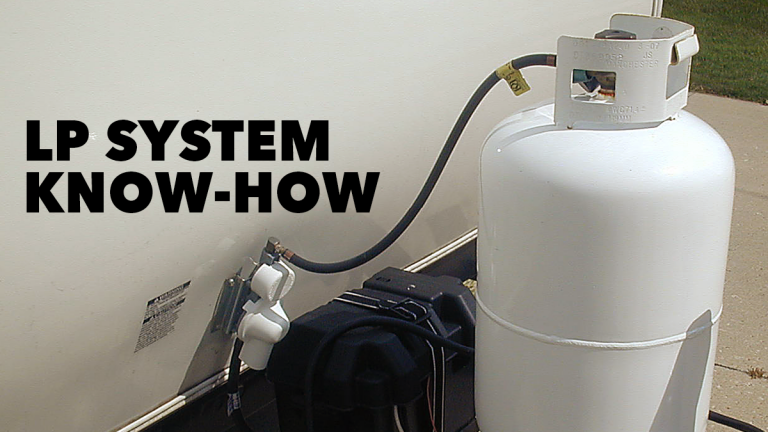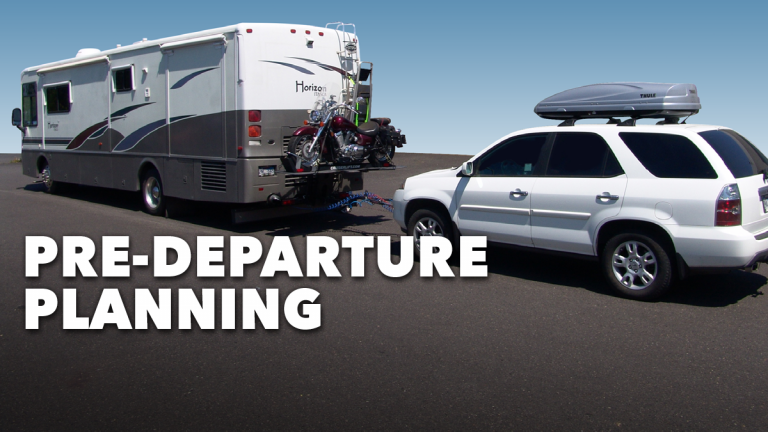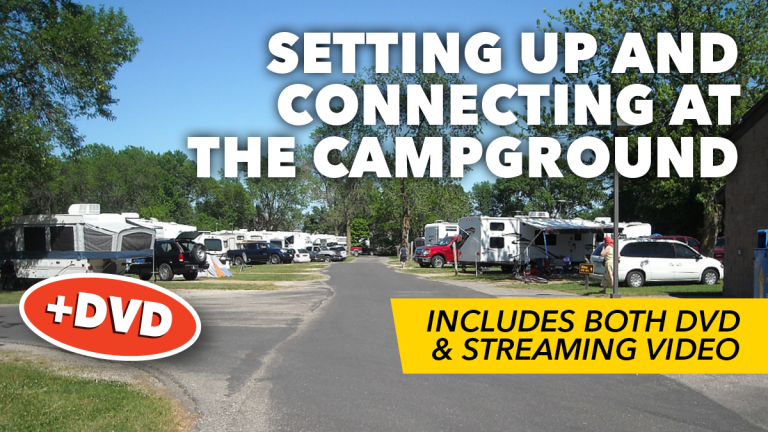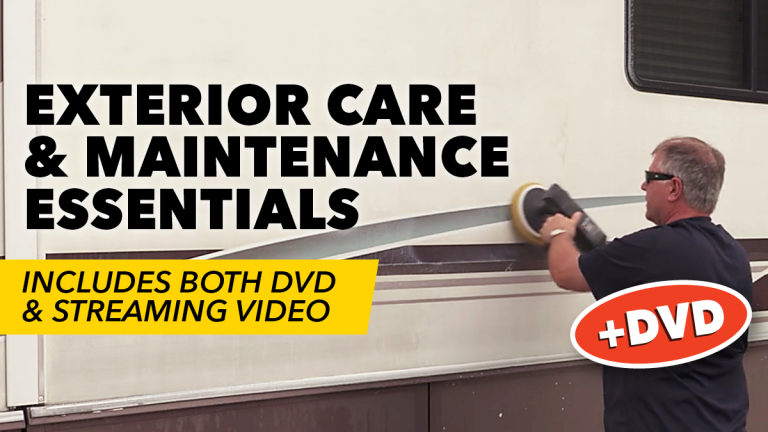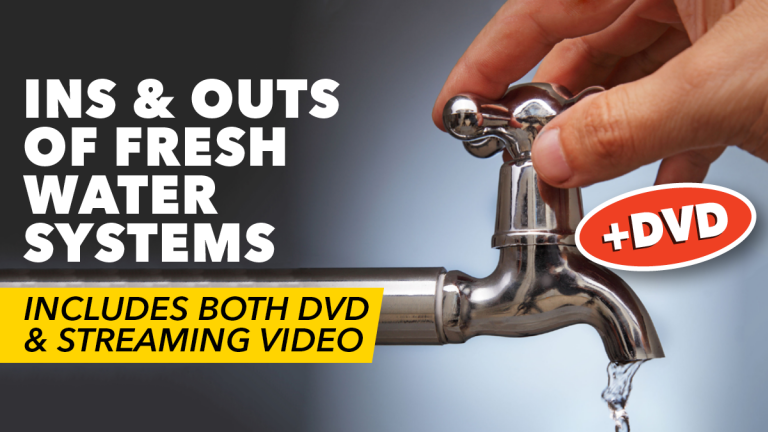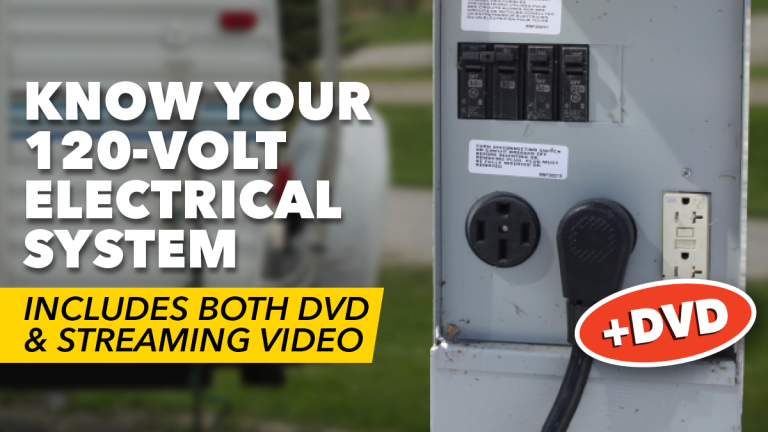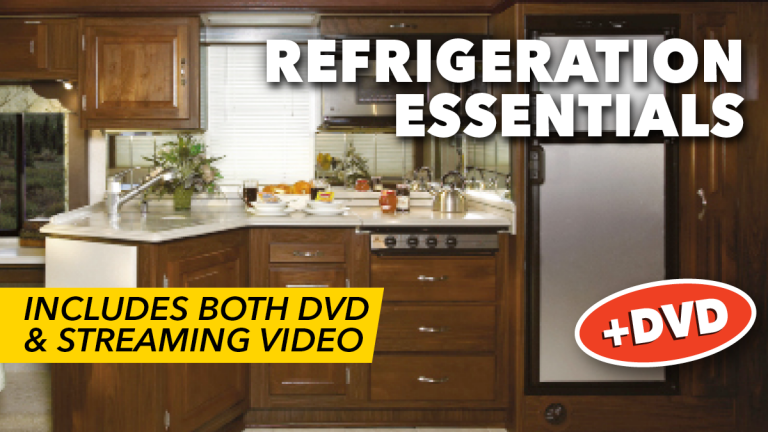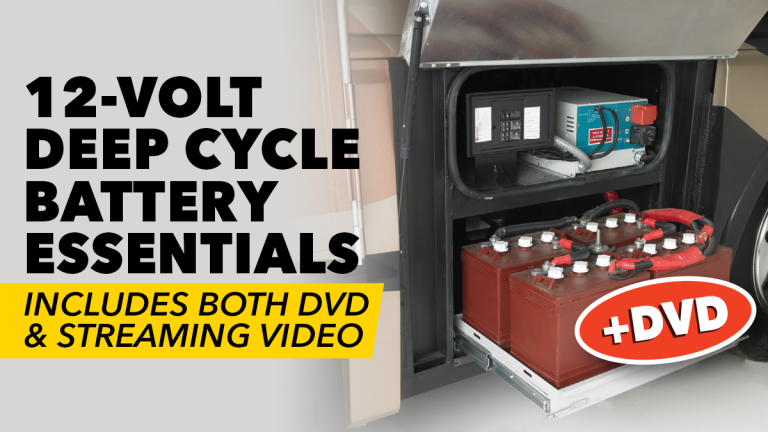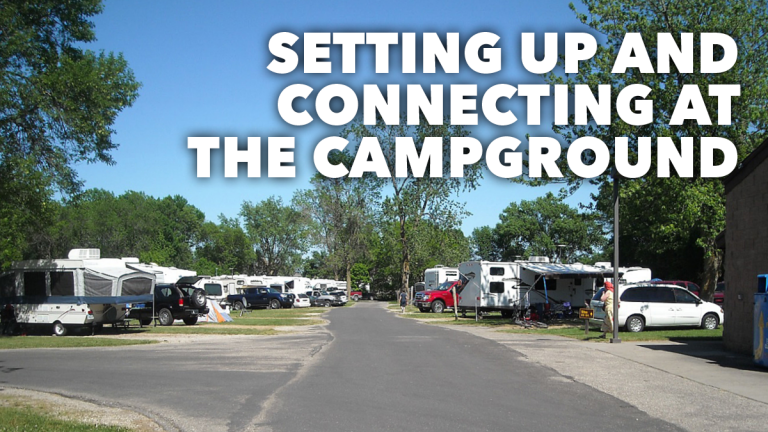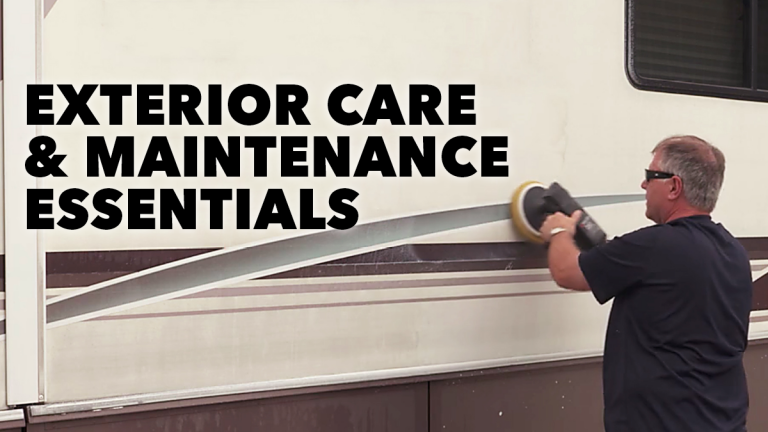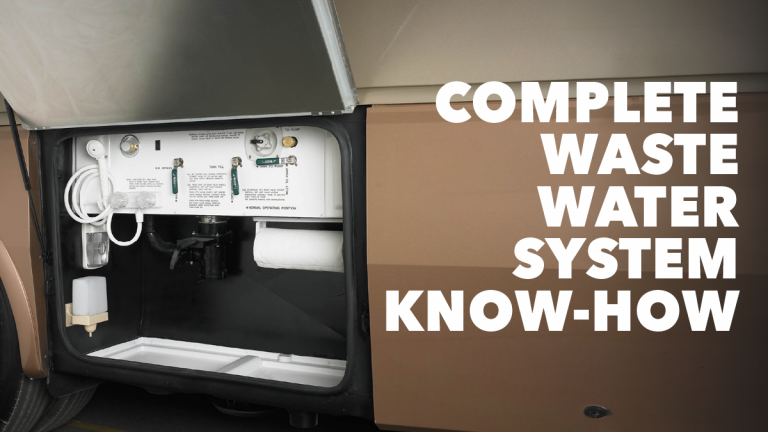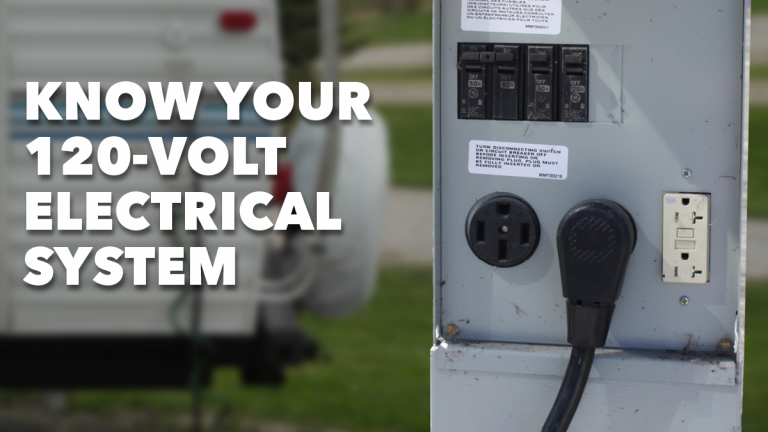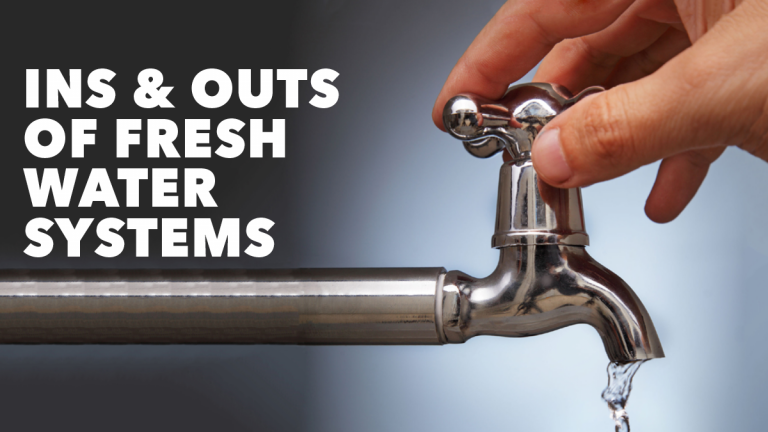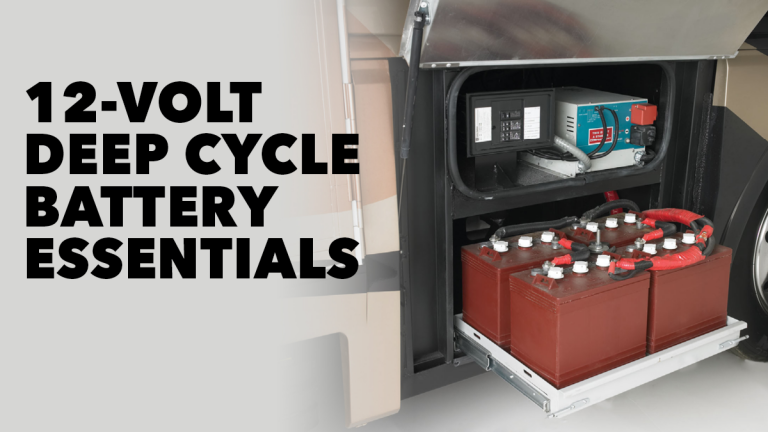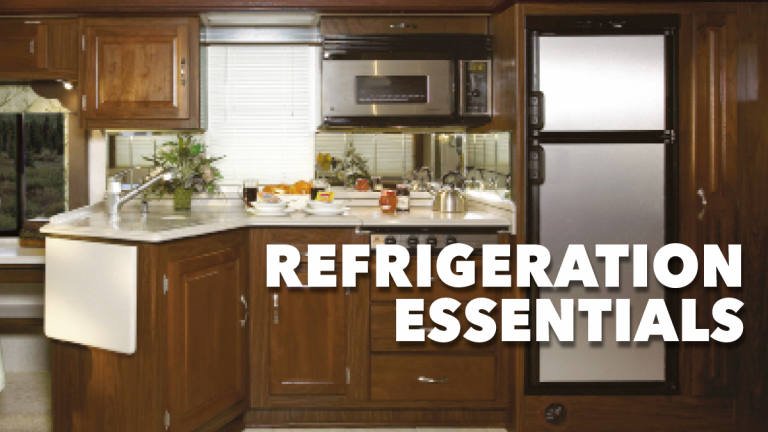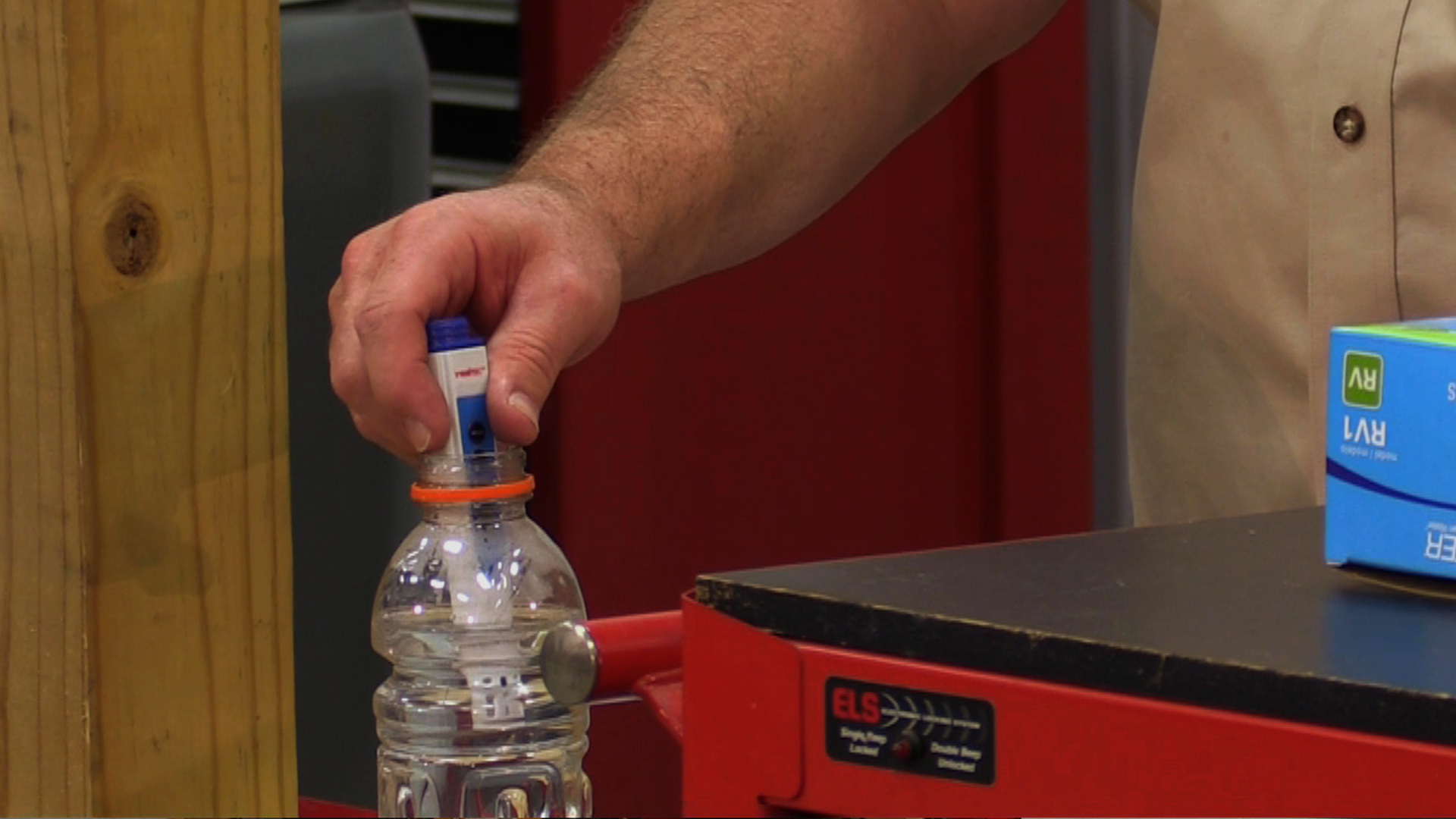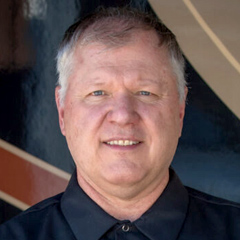
Complete Waste Water System Know-How + DVD
Dave Solberg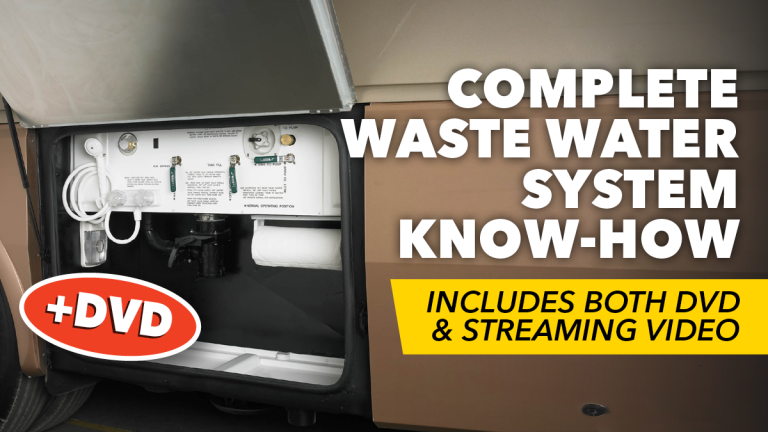

- In-depth Instruction; over 94 mins
- On-demand video access anytime
- Bonus downloadable PDF resources
- Access to class Q&A
- Available for purchase: $49.99
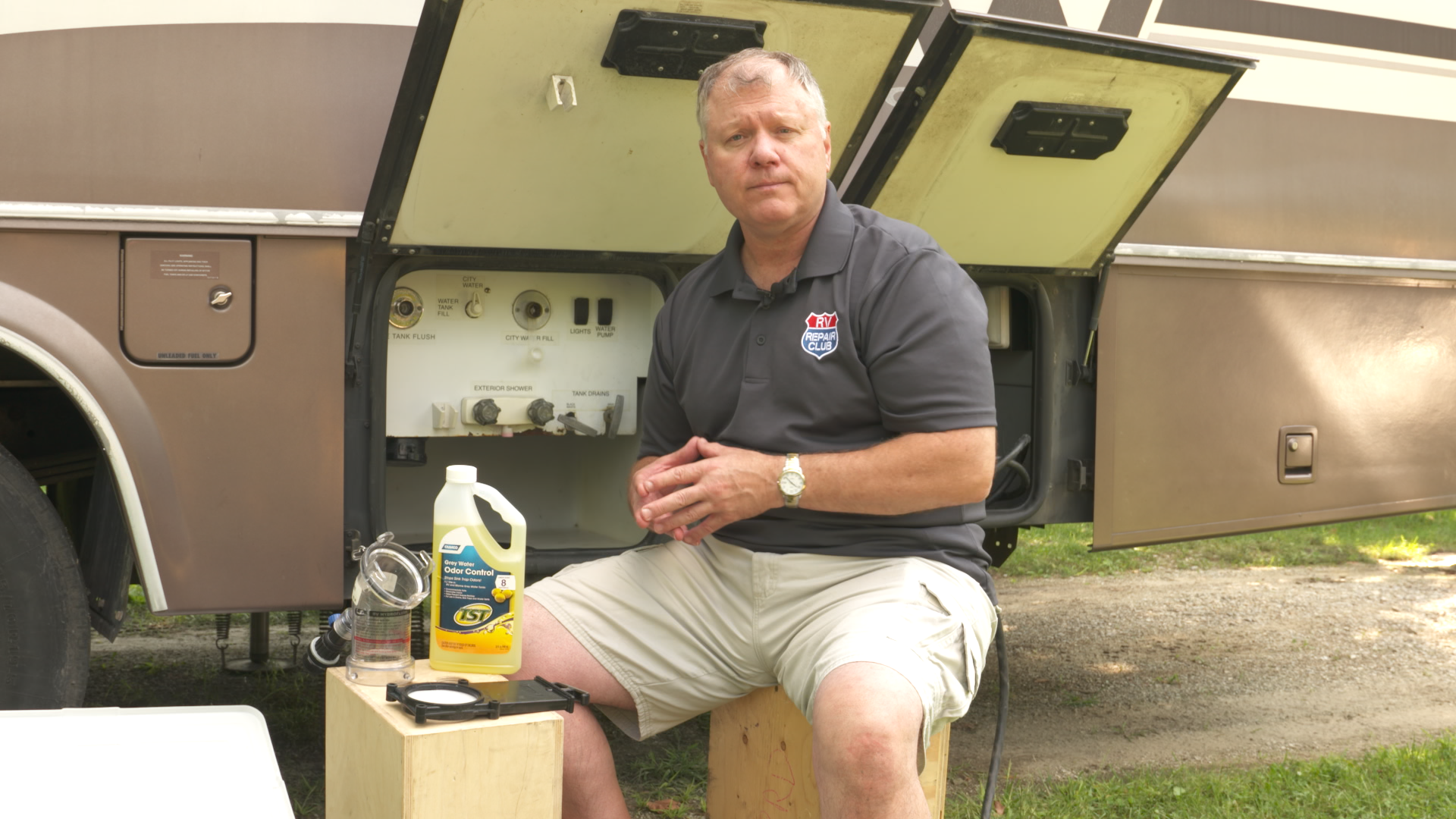
The waste water system in all RVs consists of separate tanks to hold the waste from the toilet, referred to as the Black Water Tank, and cleaner waste water from the shower and faucets, known as the Gray Water Tanks. Some models, especially trailers with two bathrooms, will have more than one tank for each system. These tanks are emptied by a spade valve connected to a dump hose and a dump station.
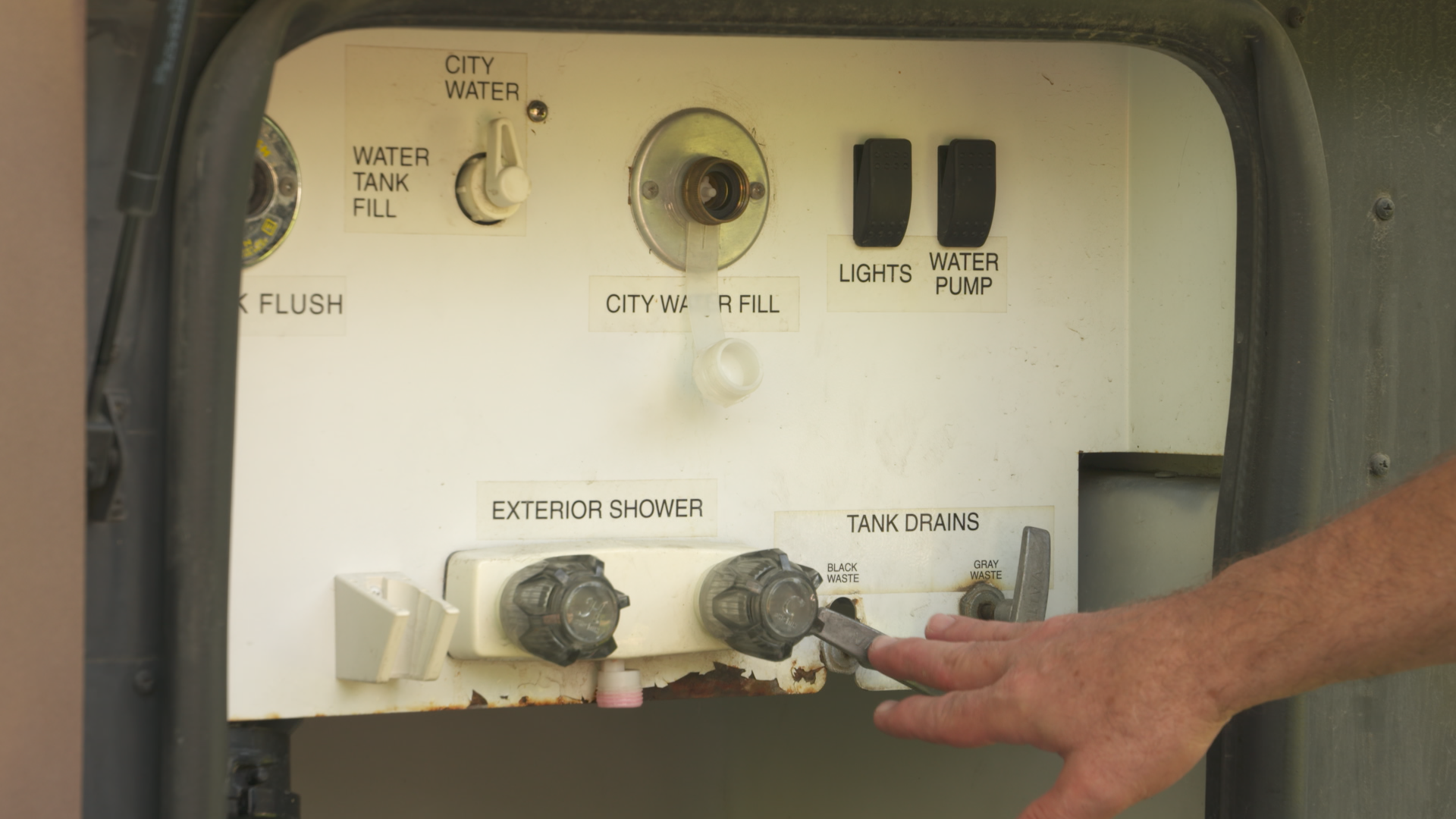
Waste from the toilet and sometimes the bathroom faucet are held in the black water tank, which is actually gray in color, the same as the gray water tank(s). It’s important to use the correct chemical, which will introduce enzymes for the good/aerobic bacteria to help break down the waste.
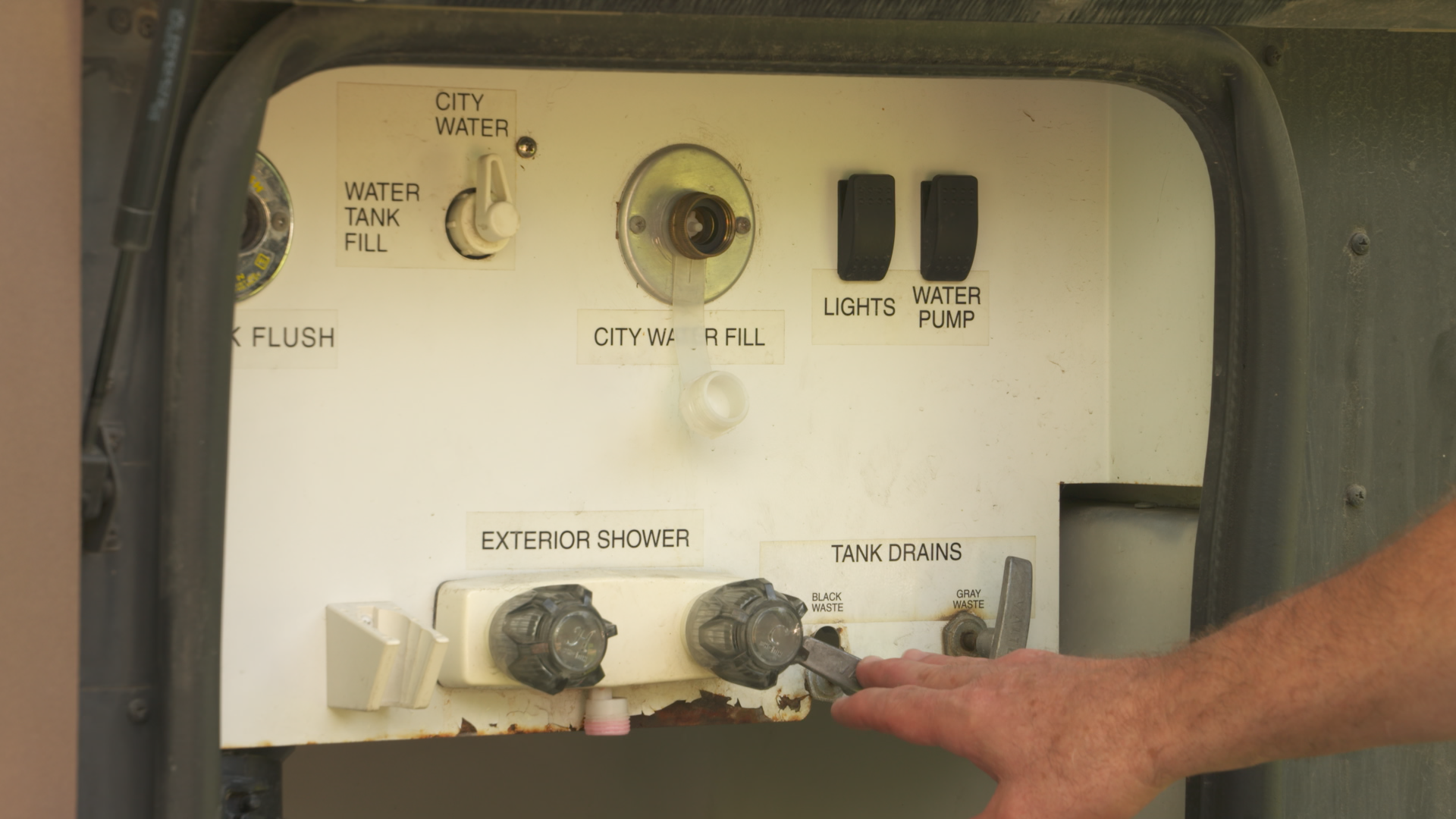
This tank holds the cleaner shower water and most of the faucets inside the unit. Since more water is used for the shower, these tanks are generally larger or there are two or more. The dump valve can be identified by the smaller 1.5” pipe coming out of the tank vs. the larger 3” pipe used for the black water tank.
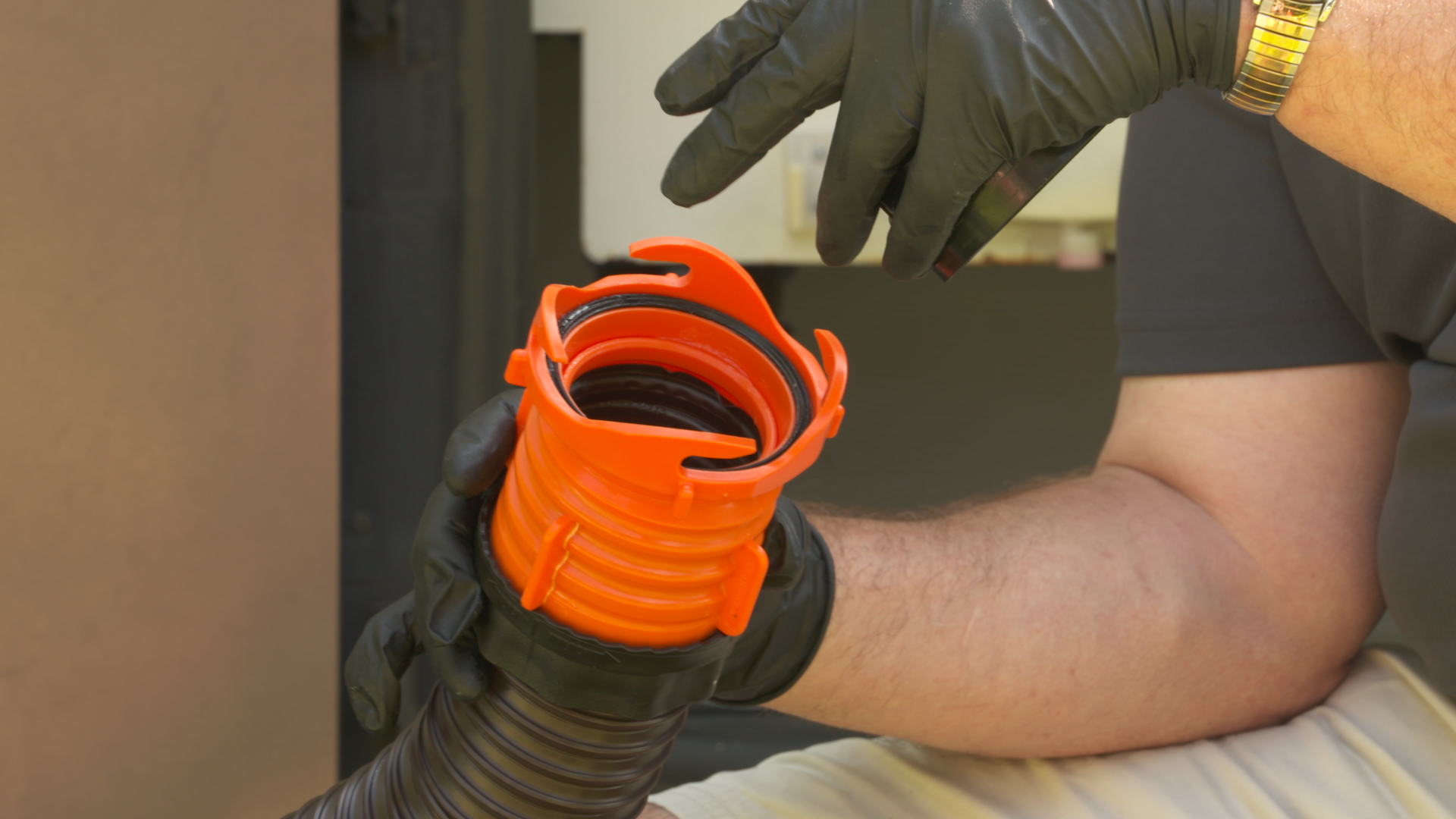
Most standard sewer hoses that come with a unit are the basic plastic accordion hose with a generic end. It’s a good idea to upgrade to a more professional hose that extends the length needed and has a 90-degree end that will fit on a variety of dump stations. Keep it stored in a sanitary location away from other hoses and fittings.
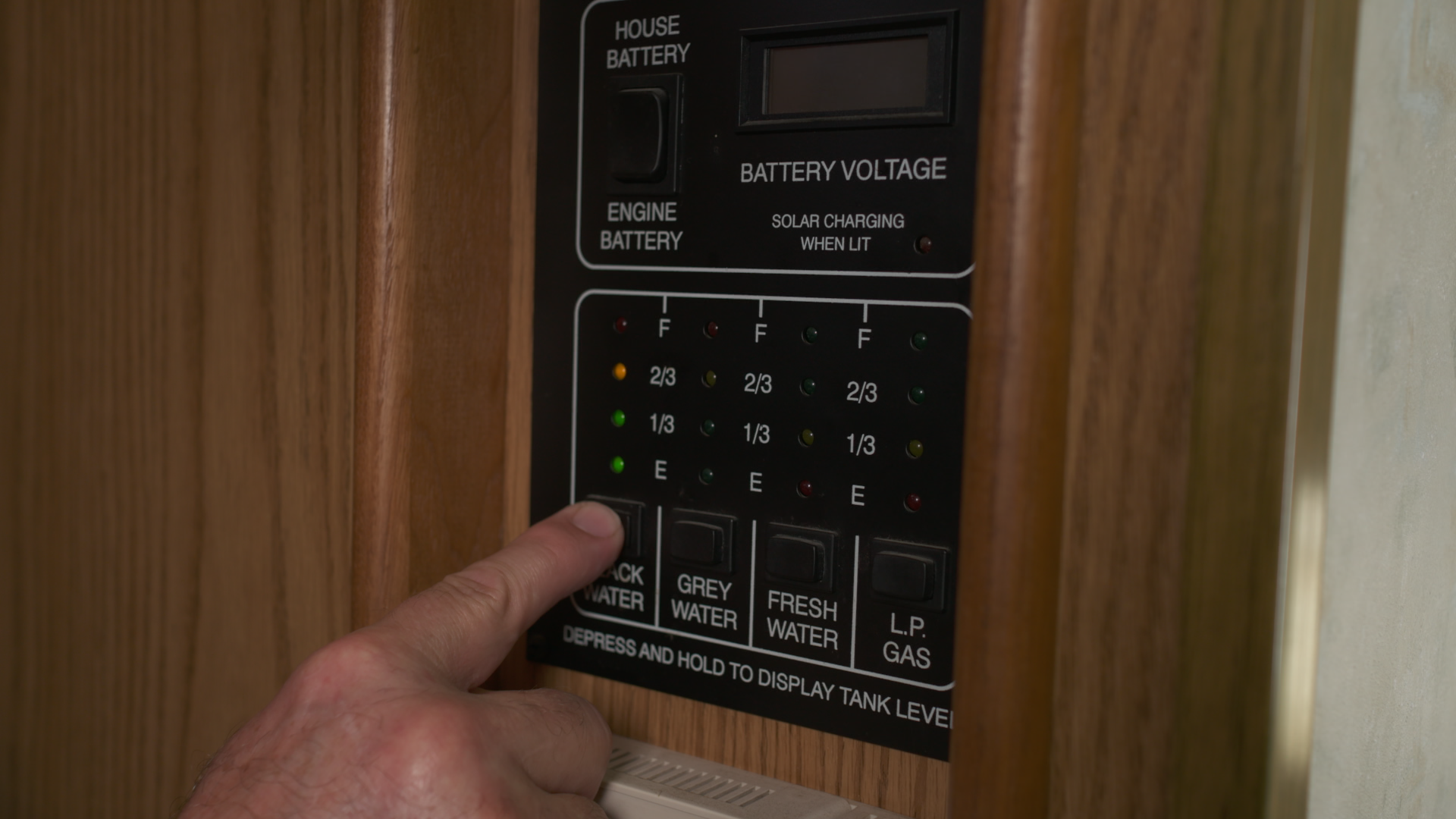
Typically, monitor probes for the waste water system are connected to the side of the tank by drilling a hole, inserting the probe and wire, and tightening the screw. As the waste water level rises, the probes “arc” across and send the signal to the panel for the different levels. Impurities in the water, toilet paper, and other contaminants can create a constant “arc” even when empty. Using the proper toilet paper and probe cleaning products can reduce this.
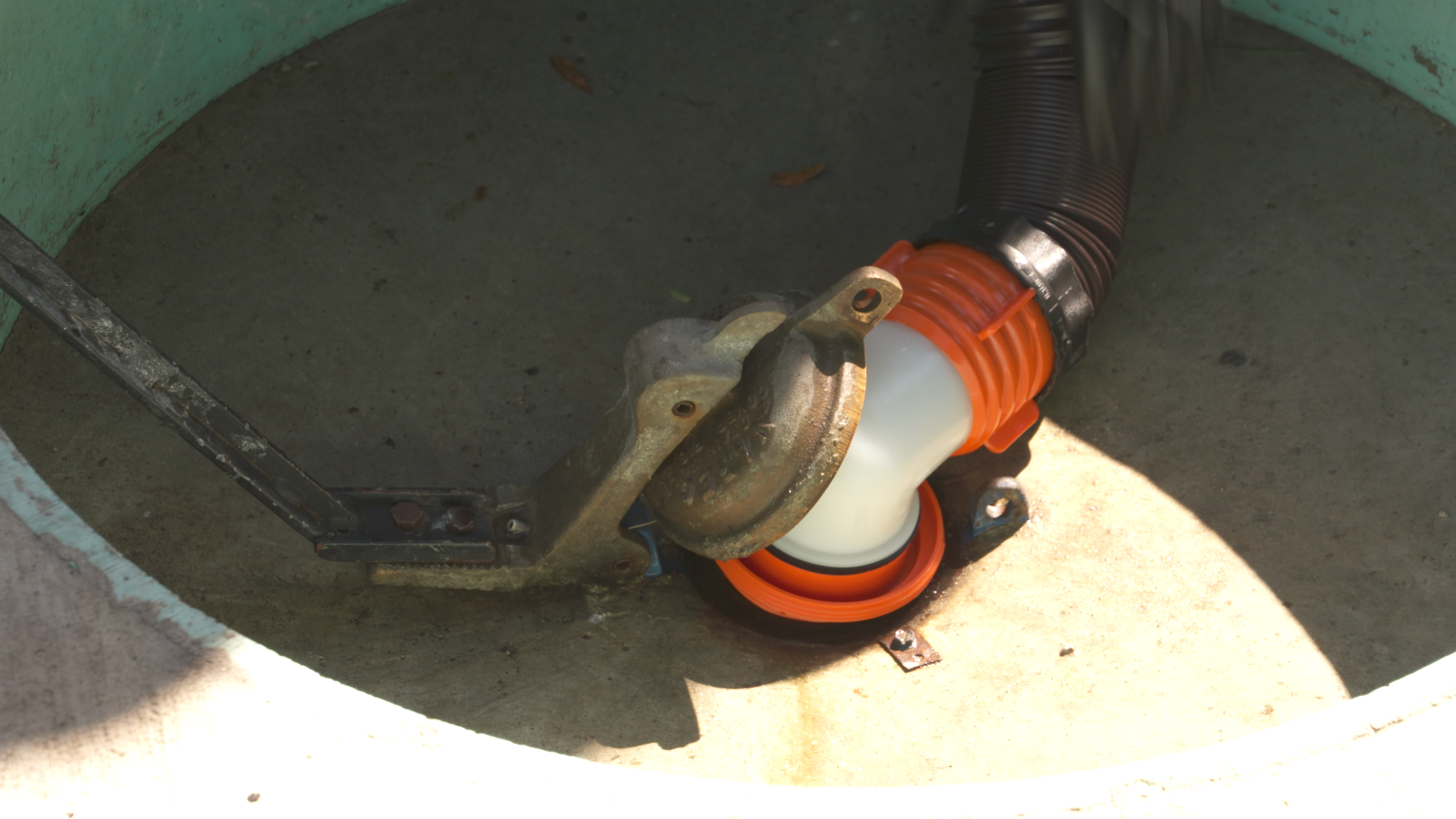
Just pulling the valve and waiting for the water to stop flowing will surely create problems down the road. Start by using a clear plastic adapter to see the waste flow and after the first waste drain, fill the tank back up to ¾ full and drain again, you’ll be amazed at the amount of waste still in the tank. Using a black tank flush valve is also a good way to get all the waste off the side of the tanks and the probes.
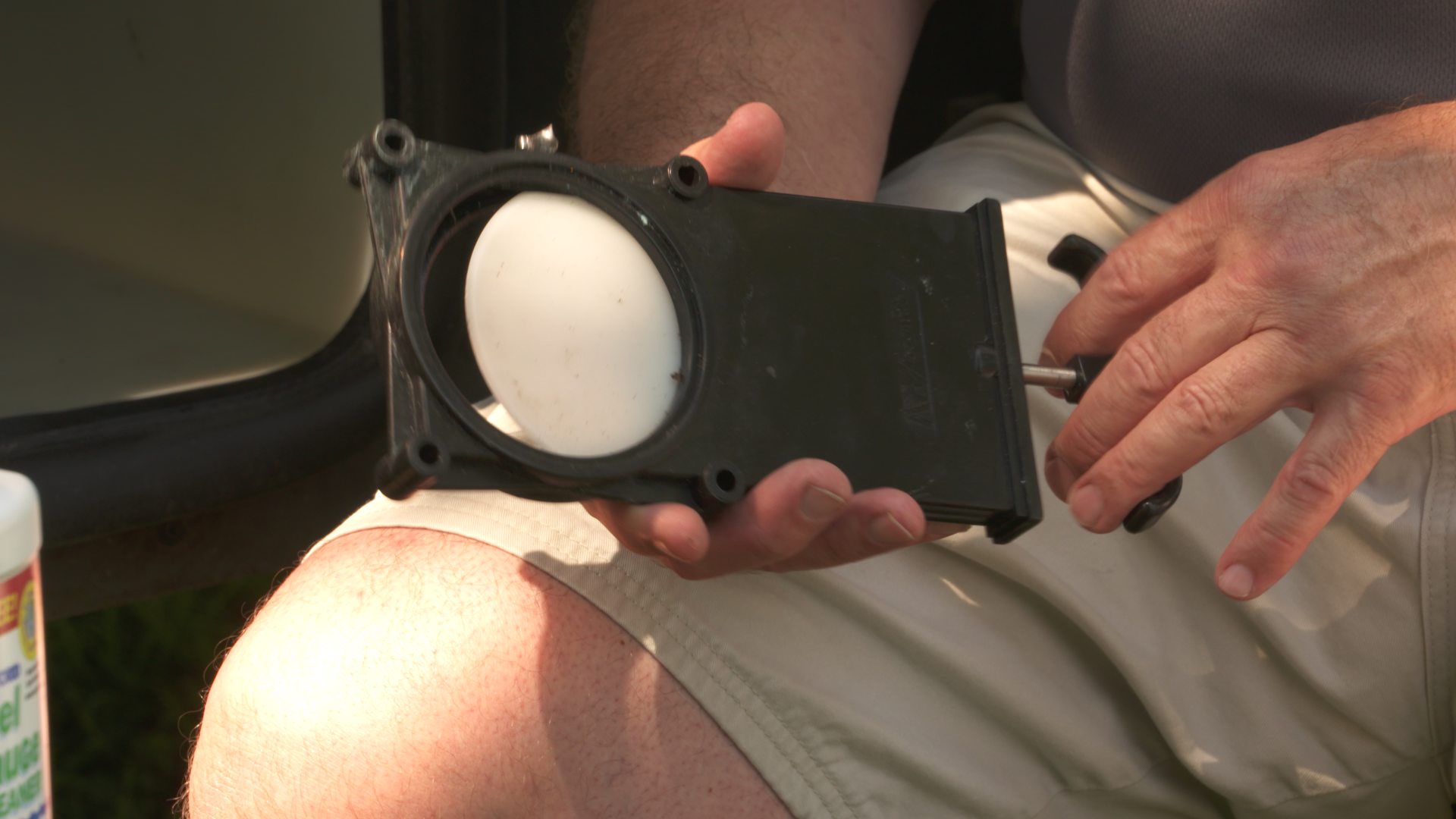
The waste water system typically doesn’t need much maintenance, however keeping the system clean and the valves/seals lubricated will reduce problems down the road. Make sure the valve pulls are not bent and sticking, the seals have been lubricated with an approved product, and using the correct chemicals and paper will ensure a trouble free waste system operation.
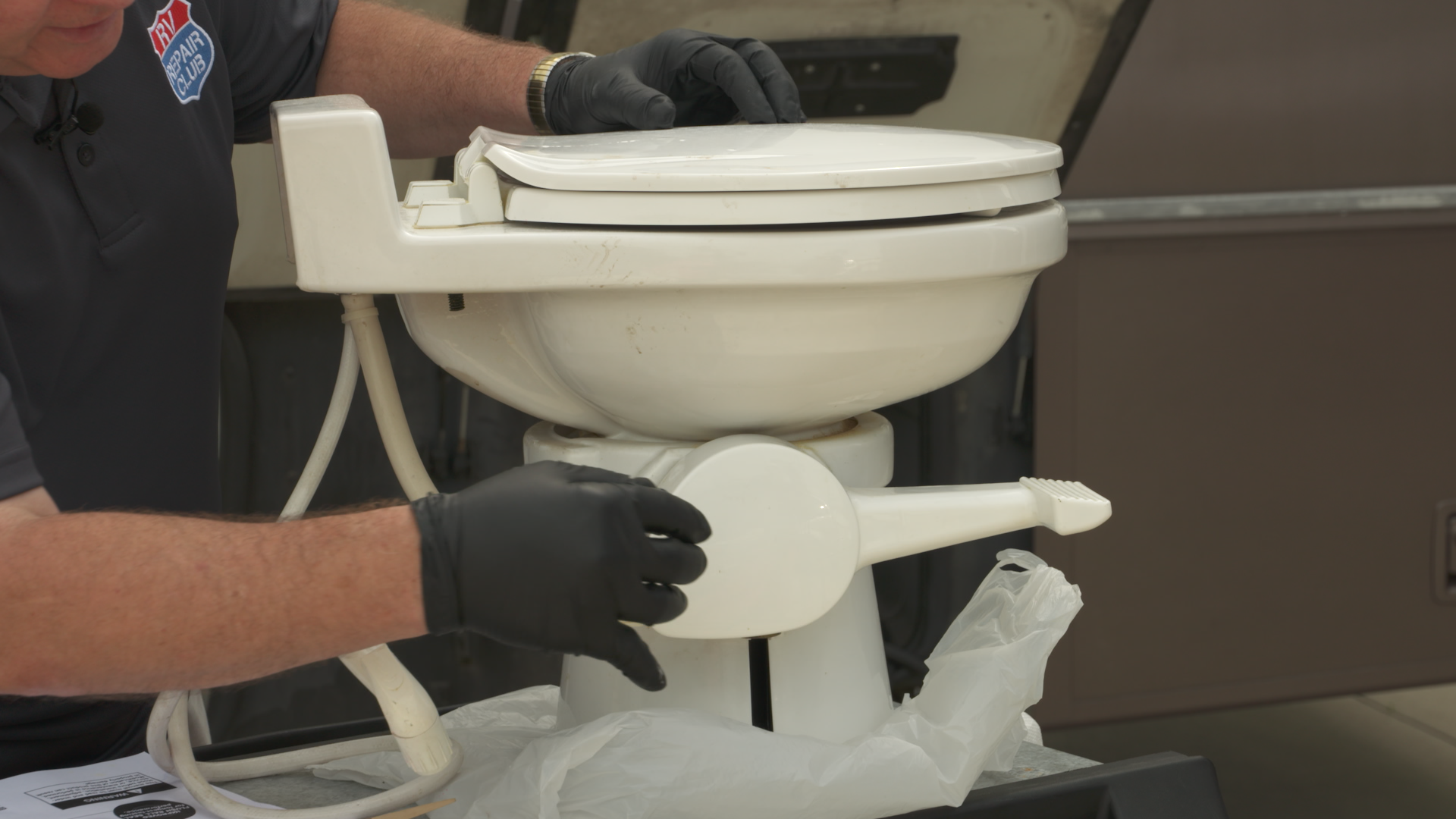
Even though the toilet in your RV looks similar to the residential model in our home, it’s quite a bit different. It has lower water pressure that is supplied by the lines rather than a tank, and you need to manually put water in the bowl.
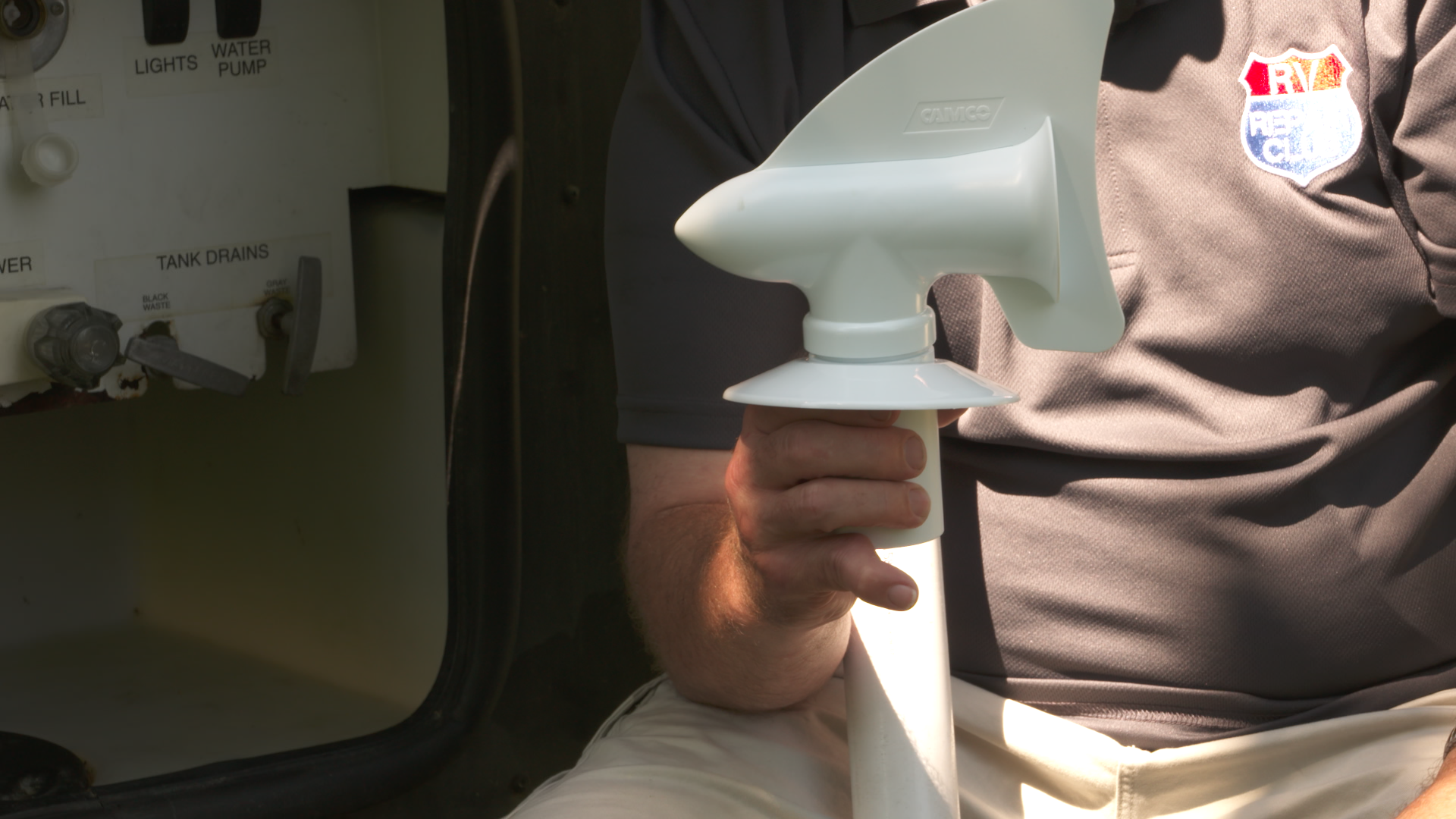
All waste water systems need to be vented to eliminate a vacuum and allow water to flow to the waste tanks. Most RV vents run to the top of the unit with PVC pipe and a cap on the top which should be inspected on an annual basis. An aftermarket vent is available that will rotate with the wind direction and actually draw odors out of the holding tanks.
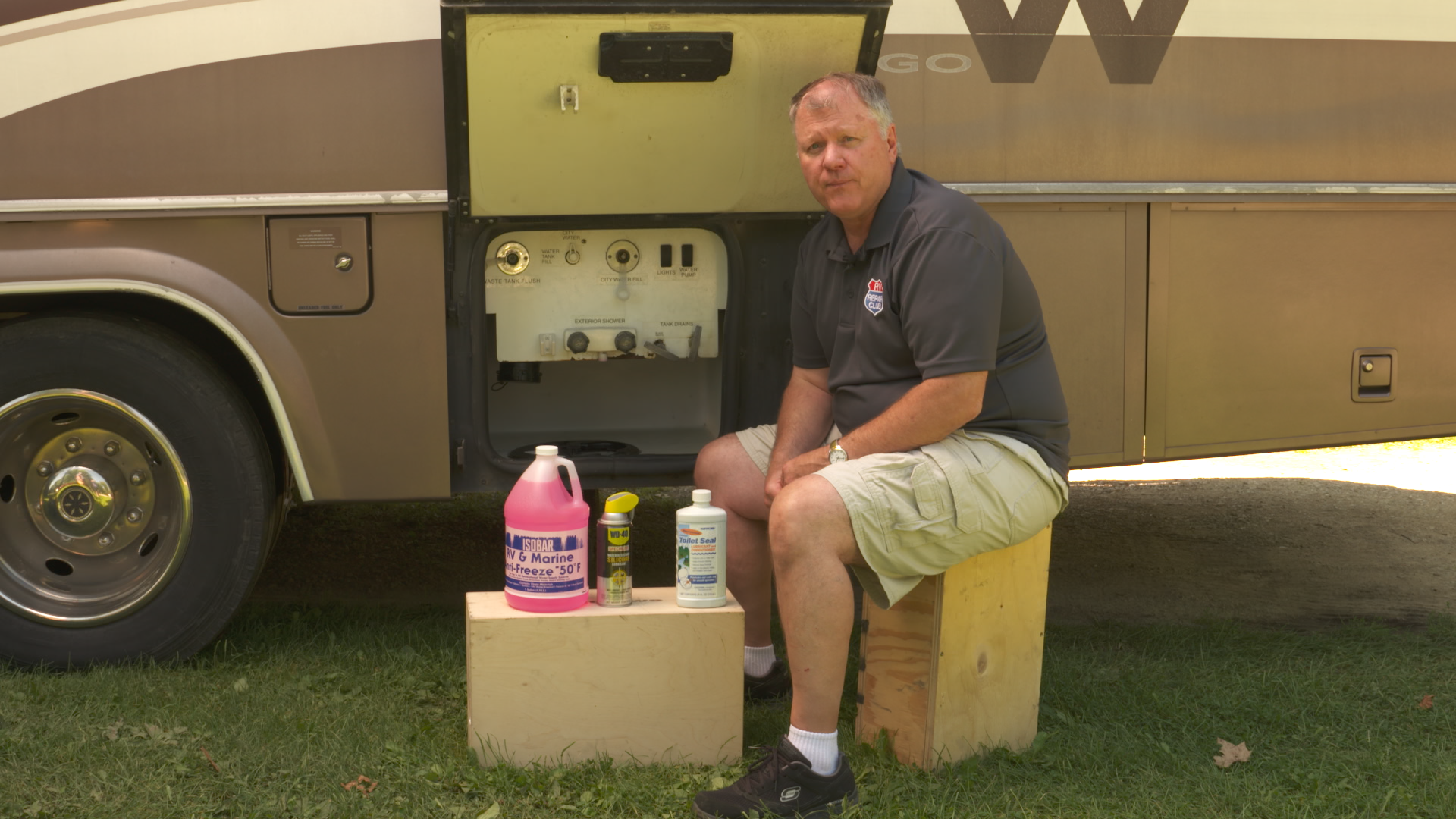
The waste water tanks need very little attention when it comes to winterizing, just a little RV antifreeze dumped down the toilet and shower. However, the toilet water supply needs to be drained or filled with RV antifreeze and RV antifreeze poured into the P Traps of the sinks.
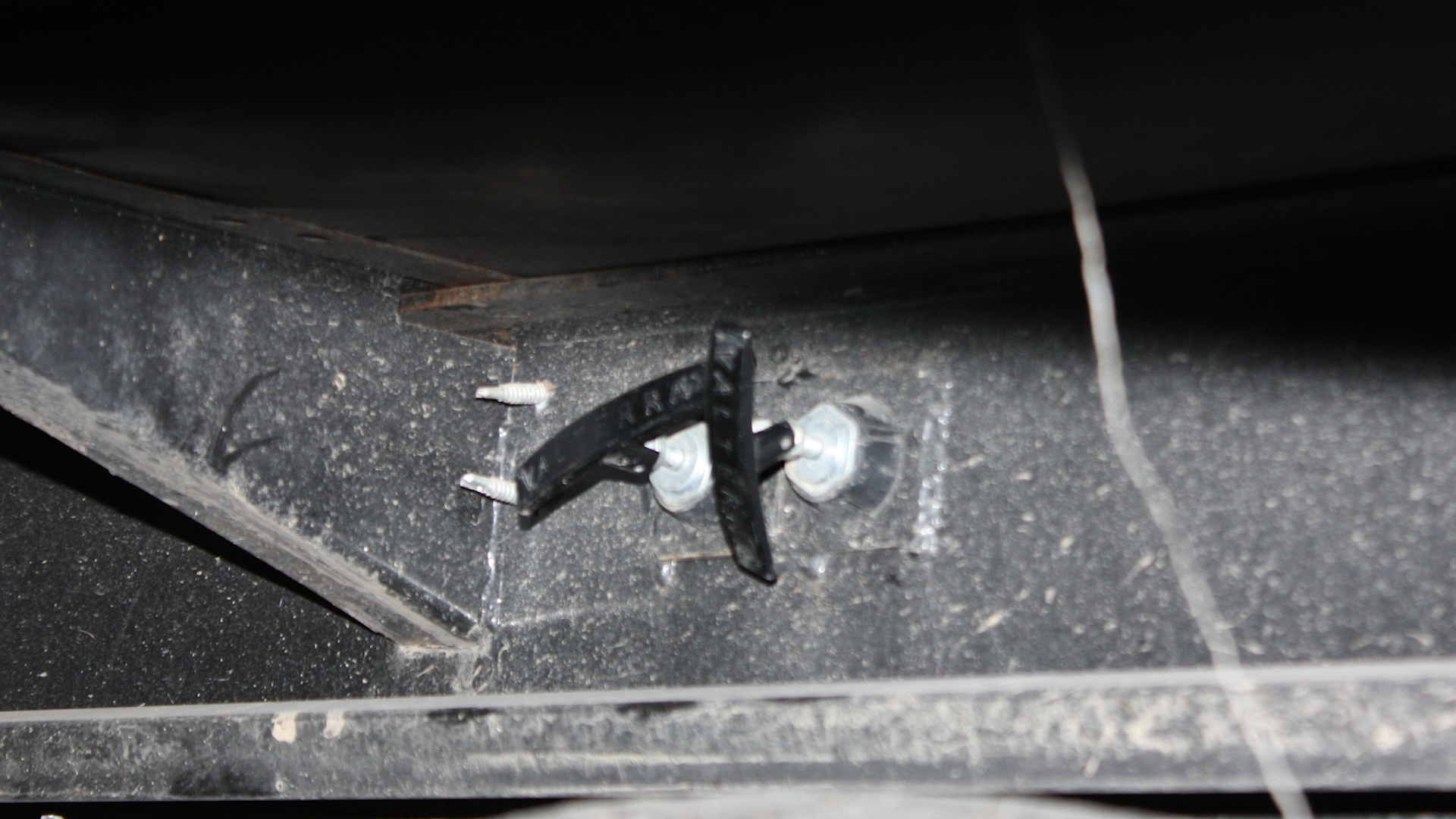
This class covers troubleshooting common problems such as nothing coming out when the valve is pulled, a continual leak when the valve is supposedly closed, replacing seals on the valves, and what to do to eliminate odors coming inside the unit by replacing the standard vent with a rotating “Cyclone” roof vent.
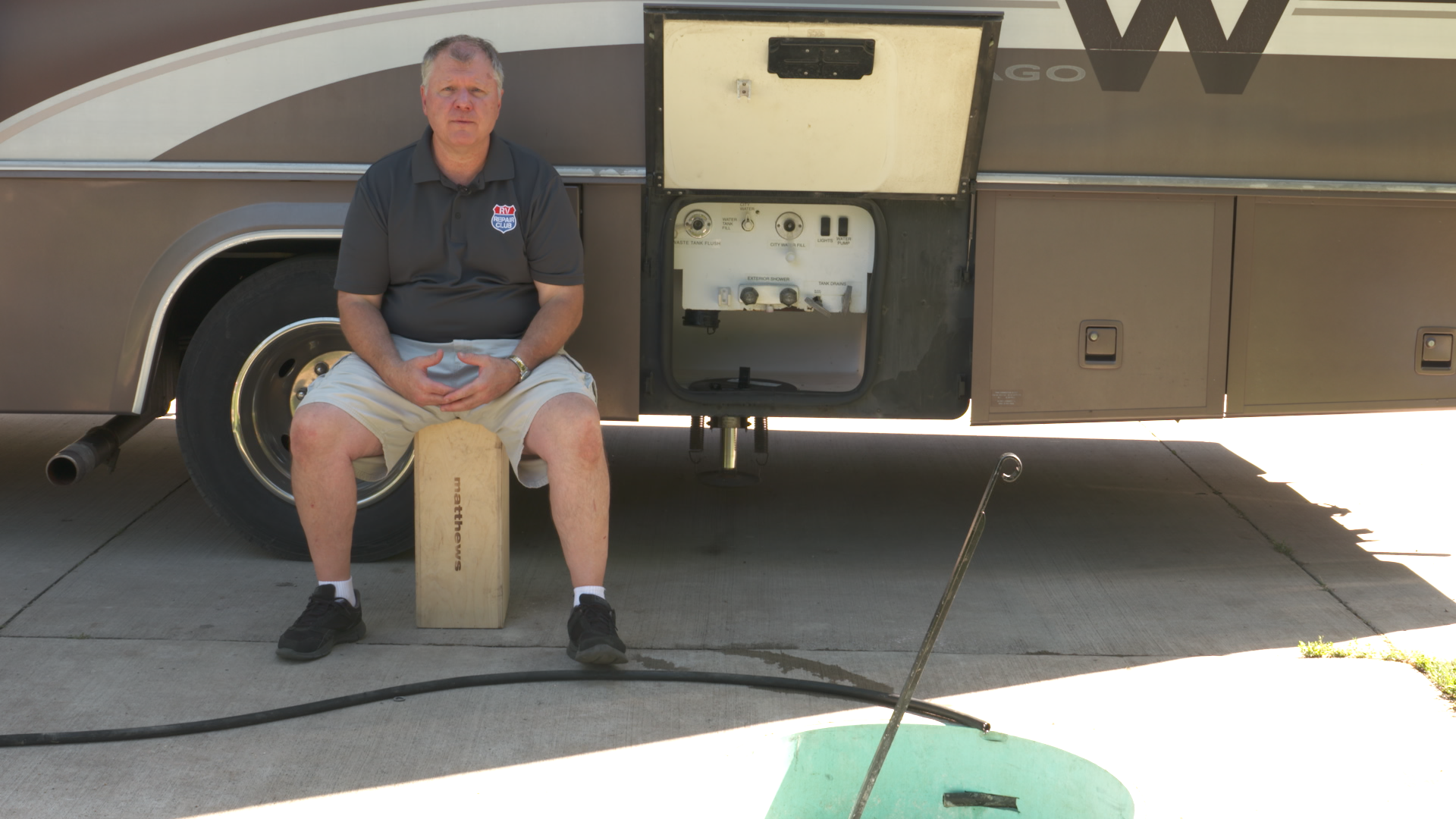
Most RV owners don’t want to spend much time getting to know their waste water system – rather a quick pull of the handles at the dump station and the rest is out of sight, out of mind.
That is until there is a foul odor inside the coach or the tanks won’t dump at all! Ask a seasoned RV veteran and they all have a horror story when it comes to dumping the tanks somewhere in the past.
In this class, your instructor Dave Solberg will provide an understanding of how the waste water system works, the correct chemicals to use, and some preventative maintenance that will make dumping your tanks an odor- and hassle-free experience.
This class starts with an overview explaining how the waste water system is designed to hold the waste from the toilet, in what is commonly referred to as the black water tank, and the waste from the shower and sinks, in what known as the gray water tank.
Properly dumping the waste water tanks is more than pulling the valve and waiting for the water flow to stop. Critical topics you’ll learn include installing a clear plastic adapter, using a black water flush valve, and tips for proper dumping and etiquette at the public dump station.
You’ll also learn how using the right chemicals are important, as enzymes are introduced into the system and aerobic bacterial help break down the waste. The waste water system requires little maintenance, however there are some tips that can make your seal more pliable and last longer. And if a valve fails to hold the waste water, you’ll learn how the rubber seal can be cleaned or replaced.
Finally this class will also show you how to troubleshoot inaccurate monitor panel readings, remove a toilet, troubleshoot other common problems, and more.
In addition to the detailed video instruction you’ll receive, this online class provides you with some downloadable resources and helpful information, including: A detailed Class Guide you can follow and use as a reminder for the key points of the class instruction; resource documents that will help you with cleaning and troubleshooting your toilet, and a BONUS Video that gives you some good tips on toilet paper for your rig.
NOTE: You’ll receive this Class video instruction in two forms: As on-demand streaming video (in your RV Account); and as a physical DVD, mailed to you.
Dave Solberg
Dave Solberg is the Managing Editor of the RV Repair Club. For over 25 years, Dave has conducted a wide range of RV maintenance and safety seminars, developed dealer and owner training programs, written RV safety and handyman articles, authored an RV handbook reference guide and logged over 100,000 miles on the road in an RV.

Bonus materials available after purchase
How do I know what the Class covers?
Do I have to be a Member of RV Lifestyle & Repair to purchase a Class?
How do I purchase a Class?
How do I access/view my Class?
Do I have to take the Class right away?
Is there a limit on the times I can view my Class?
Can I view a Class on my tablet device or mobile phone?
How do I get access to the Bonus Materials for the Class?
How does the Class Q&A Resource benefit work?
Can I print out Class details?
What are PDF downloads?
Are there any system requirements to view the Class video content?
Why do you need my email?
Can I get a refund if I don’t like the Class?
How do I contact RV Lifestyle & Repair Academy?
Purchase Class
Purchase class and add to your personal library with on-demand video access.
- Enjoy on-demand video access to this content anytime, anywhere for the one-time cost below.
- You won’t lose access, with or without an active current Membership

Complete Waste Water System Know-How + DVD
with Dave Solberg